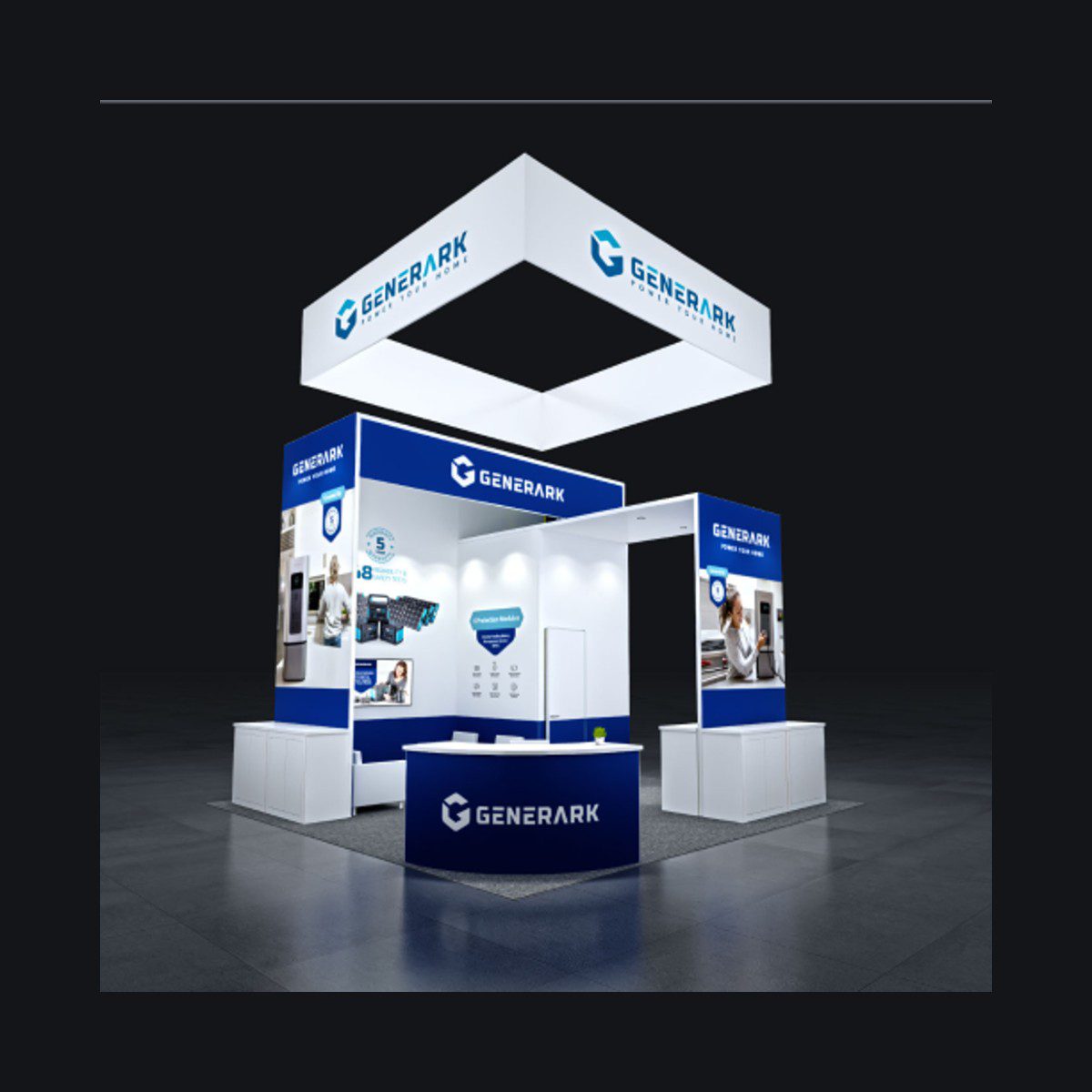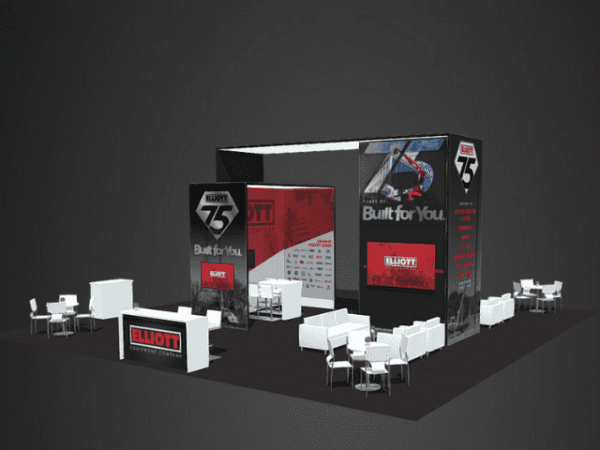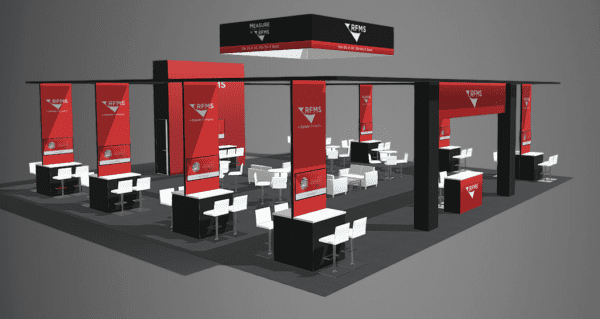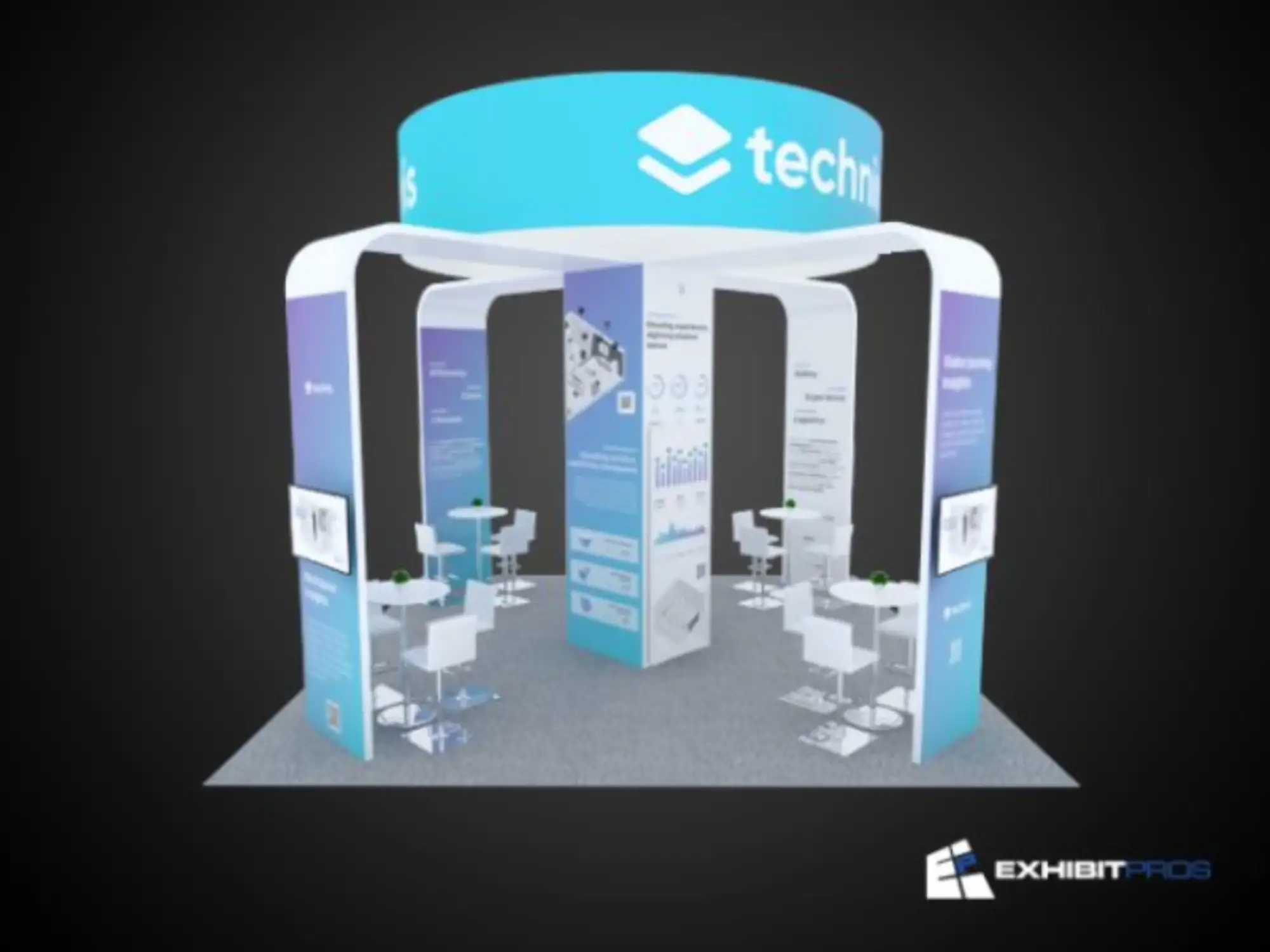How To Exhibit At A Trade Show: The Ultimate Guide
Exhibiting at a trade show can be one of the most significant investments your business makes in terms of both money and time. However, the potential rewards are immense, offering unparalleled opportunities to boost visibility, forge new business relationships, and showcase your latest products or services directly to your target audience.
Understanding the nuances of how to properly plan, execute, and follow up on your trade show experience is crucial for maximizing your return on investment. This guide will walk you through the essential steps to ensure your trade show success from start to finish.
Preparation Stage
Choosing the Right Trade Show
Selecting the right trade show for your business is the first critical step in the preparation process. The ideal trade show will align closely with your industry, target audience, and business goals.
Industry Relevance: Make sure the trade show focuses on your specific industry or at least closely relates to your market. Attending an event that aligns with your business means that the attendees are more likely to be interested in your offerings.
Size and Scope: The size of the trade show should match your current business needs. Larger shows can offer more exposure but also more competition, while smaller, niche events may provide more targeted networking opportunities.
Past Success Stories: Look at the testimonials and case studies of past exhibitors. What successes have they seen? How does the trade show promote its exhibitors, and what kind of media coverage does it attract?
Setting Objectives and Goals
Once you’ve selected the appropriate trade show, the next step is setting clear, measurable objectives for what you hope to achieve. This could include generating leads, introducing a new product, increasing brand awareness, or expanding your professional network. Your goals will guide every decision you make – from the design of your booth to the staff you choose to manage it.
Specific Objectives: Set specific and measurable objectives. Instead of a vague goal like generating leads, specify how many leads you aim to collect. This specificity will help in evaluating the success of your participation after the event.
Align Goals with Overall Business Strategy: Ensure that the goals for the trade show align with your overall business strategy. This alignment ensures that the efforts put into the trade show directly contribute to your broader business ambitions.
Budgeting for the Event
Effective budgeting is crucial for managing the cost of exhibiting at a trade show, which can be substantial. Include all possible expenses in your budget to avoid any surprises.
Booth Design and Construction: Depending on whether you opt for a custom build or a modular system, costs can vary significantly. Consider how the design of your booth can help achieve your goals.
Marketing Materials and Giveaways: Budget for promotional materials like brochures, business cards, and giveaways. These are essential for engaging attendees and leaving a memorable impression.
Additional Costs: Consider other costs like shipping, drayage (moving your materials within the venue), insurance, and any services provided by the trade show organizers, such as electrical and Wi-Fi.
Designing Your Booth
Your booth is your brand’s physical representation at the trade show; it needs to attract attention and offer functional value for the interactions that you anticipate. The design should facilitate traffic flow, provide space for discussions, and display your products or services effectively.
Attractiveness: Your booth should be visually appealing to draw attendees. Use bold graphics, dynamic lighting, and clear signage to stand out.
Functionality: Consider how the design will facilitate interaction with attendees. Include private meeting areas if you plan to conduct sales discussions or presentations during the show.
Branding: Ensure that your booth reflects your brand’s image and values. Consistency in branding helps in making your booth memorable and reinforces your brand identity among attendees.
Marketing Your Presence
To maximize your investment, start marketing your presence at the trade show well before the event begins. Use your company’s marketing channels to announce your participation and invite customers and prospects to visit your booth.
Social Media: Leverage social media platforms to create excitement about your presence at the trade show. Regular posts, live videos, and interactive content can help draw more visitors to your booth.
Email Campaigns: Send out targeted email campaigns to your subscriber list informing them about the trade show. Include a compelling reason for them to visit your booth, such as a special demonstration, a new product launch, or exclusive offers.
Partnerships: Partner with the trade show organizers or other exhibitors to cross-promote your presence. This can expand your reach to potentially interested attendees who might not be familiar with your brand.
This foundational planning and preparation phase is crucial for setting up a successful trade show experience.
We will now explore the actual execution at the trade show and the critical follow-up activities that ensure your hard work translates into tangible business results. Read on for more detailed insights into making your trade show participation a resounding success.
Staff Training and Role Assignments
Once your booth design and marketing strategies are in place, preparing your staff for the trade show is your next crucial step. The people who man your booth are the face of your company during the event. They must be knowledgeable about your products and services, skilled in customer service, and prepared to handle a variety of interactions.
Training Sessions: Conduct training sessions to ensure your team understands the trade show’s goals, knows the products or services inside out, and is comfortable with the sales pitches or information they will present. Role-playing different customer scenarios can be an effective training technique to prepare them for real interactions.
Role Assignments: Assign specific roles to each team member based on their strengths. Some might be better at welcoming visitors and providing initial information, while others might excel in detailed discussions or closing sales. Having clear roles can prevent confusion and ensure that all potential customers are handled effectively.
Engagement Tactics: Teach your team engagement tactics that can help keep conversations flowing. This could include understanding how to read visitor body language, asking open-ended questions, and being proactive about gathering contact information.
During the Trade Show
Capturing Attendee Interest
The trade show itself is a dynamic environment where your preparation and planning are put to the test. How effectively you capture and maintain attendee interest can significantly impact the number of leads and connections you make.
First Impressions Matter: The first impression of your booth is crucial. Ensure it is welcoming and clearly communicates what your brand is about. Staff should greet visitors with a smile and an open demeanor, ready to engage in conversation.
Product Demonstrations: Live demonstrations can be a powerful way to draw attendees to your booth. Schedule regular demonstrations to keep the booth active and engaging. Ensure that each demo clearly showcases the benefits of your products or services, answering common questions in the process.
Interactive Elements: Incorporating interactive elements such as touch screens, virtual reality, or hands-on activities can significantly enhance the visitor experience. These tools not only entertain but also educate your audience about your offerings in a memorable way.
Effective Networking Strategies
Besides selling products, trade shows are also about building relationships. Effective networking can open doors to new partnerships, client leads, and even insights into industry trends.
Be Proactive About Networking: Don’t just stay within the confines of your booth. Encourage your team to walk the floor, attend panels, and participate in networking events. This proactive approach can lead to valuable connections that might not have otherwise been made.
Use Business Cards Wisely: Ensure your team is well-stocked with business cards, which remain one of the easiest tools for quick information exchange. Each card given out should have a purpose, whether it’s to continue a conversation, share product information, or connect on social media.
Follow-Up Promises: If commitments are made to send information, schedule meetings, or make introductions, note them down immediately. Timely follow-up on these promises post-trade show can cement the relationship and demonstrate your professionalism.
Collecting and Managing Leads
One of the primary objectives for many exhibitors is lead generation. How you collect and manage these leads can impact your post-trade show success.
Lead Collection Tools: Use digital tools for lead collection such as apps or tablets where visitors can enter their details directly. These tools often allow for the addition of notes about what the lead is interested in, which can be invaluable during follow-up.
Qualify Leads on the Spot: Train your staff to qualify leads as they interact. This can involve asking specific questions to determine the visitor’s interest level and buying potential. Prioritizing these leads for follow-up can increase your conversion rates.
Immediate Acknowledgment: Whenever someone provides their information, ensure they receive an immediate acknowledgment, such as a thank you email or a text. This not only shows appreciation but also reinforces their decision to engage with your brand.
Post-Trade Show Follow-Up Strategies
After the hustle and bustle of the trade show have subsided, the real work begins. The effectiveness of your post-trade show strategies can significantly influence the overall success of your efforts. Implementing a structured follow-up process ensures that the relationships and leads you generated during the event continue to develop and contribute to your business growth.
Timely Follow-Up: Quick follow-up is crucial. Contact all leads within a few days while the memory of the trade show is still fresh in their minds. Use personalized communications that reference specific conversations or details noted during the interaction to make your message more memorable.
Segment Your Leads: Not all leads are created equal, so segment them based on the interest level, potential for sales, and the type of follow-up they require. This tailored approach allows for more targeted and effective follow-up strategies, increasing the likelihood of conversion.
Content Delivery: For those who expressed interest in more information, ensure that content delivery is prompt and relevant. Whether it’s a white paper, case study, or product samples, delivering on your promises builds trust and credibility.
Set Up Meetings: If possible, schedule face-to-face meetings with the most promising leads. These meetings can solidify relationships and move potential deals forward. If in-person isn’t feasible, arrange video calls to maintain the personal touch.
Feedback and Evaluation: Solicit feedback from your team and leads about the trade show and your booth’s performance. This feedback is invaluable for identifying strengths to replicate and weaknesses to address in future exhibitions.
Measuring Success and ROI
Evaluating the success of your trade show participation will help you analyze the return on your investment and plan for future events.
Analyze Lead Conversion: Track how many leads turned into customers and the revenue generated from these conversions. This analysis provides a clear picture of your trade show ROI.
Review Goals and Objectives: Revisit the goals and objectives set before the trade show. Assess whether they were met and understand the reasons why or why not. This evaluation helps in setting more accurate goals for future shows.
Cost Versus Benefit Analysis: Consider all costs involved, including booth design, staffing, travel, and accommodations, against the benefits gained. Understanding this balance can help in budgeting more effectively for future events.
Optimizing Performance at Trade Shows with Exhibit Pros
Exhibit Pros provides the tools you need to maximize your trade show success from start to finish. We offer custom booth designs tailored to meet the specific needs of your business and audience. Our expert team handles everything from booth construction to logistics, managing every aspect of your exhibit professionally.
We understand that different businesses have different needs, which is why we offer a variety of booth sizes to choose from.
Whether you need a compact 10×10 booth for a focused display or a more expansive 10×20 trade show booth rental for a larger presentation, we have you covered. For those looking to make a grand impact, we also provide large 40×40 booths that offer ample space for elaborate displays and high visitor engagement.
Our flexible options ensure that you can find the perfect fit for your trade show goals and budget, allowing you to showcase your brand effectively.
Doing It Right the First Time
Exhibiting at a trade show is a significant undertaking that, when done correctly, can provide substantial benefits to your business. By carefully planning your trade show strategy, engaging effectively during the event, and following up diligently afterward, you can ensure that your investment pays off.
Every trade show is an opportunity to enhance your brand, meet potential clients, and grow your market presence. With the right approach and support from our trusted team, you can turn every trade show into a stepping stone towards greater business success.






